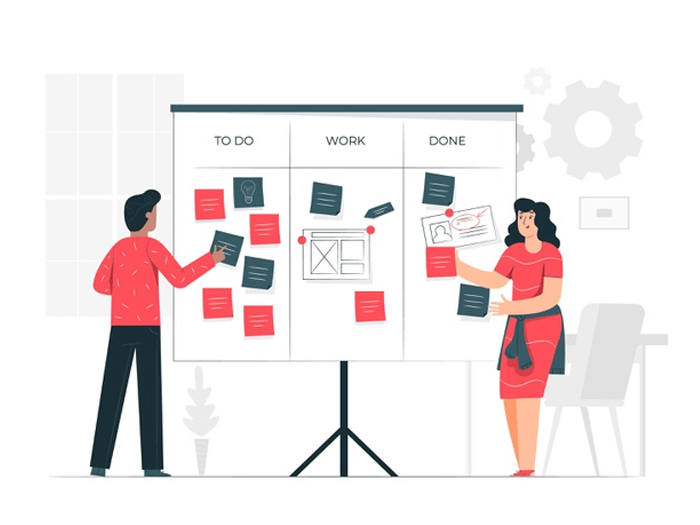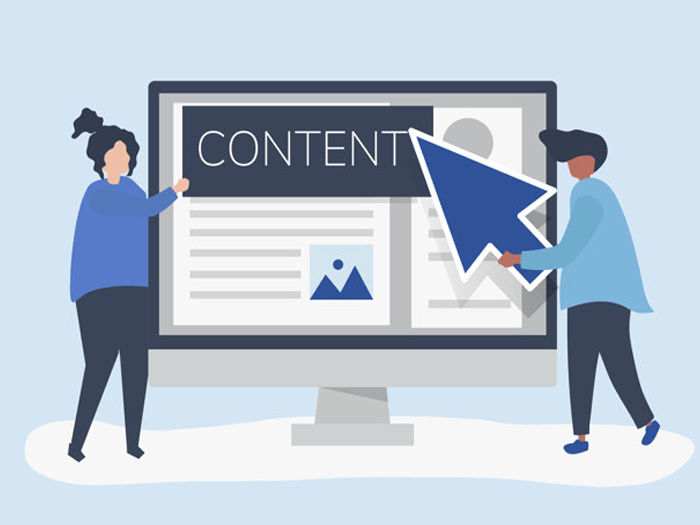“Operations in Iraq and Afghanistan, and the war on terrorism have reduced the pace of military transformation and have revealed our lack of preparation for defensive and stability operations. This Administration has overextended our military”. – By Barack Obama
Preparation is everything. Whether you want to start a war or peacekeeping movement. The steps you take ahead of time are crucial to your success.
In the same vein, if you’re figuring out how to develop a strategic marketing plan. Then, you must know that preparation is not optional for you. Unlike a business plan, a marketing plan focuses on winning and keeping customers; it’s strategic and includes numbers, facts, and objectives that drive better ROI.
A good marketing plan provides all the tools and tactics required to achieve your sales goals. It’s your plan of marketing actions; what you sell and who you sell to?
In this article, I will give you 9 preparatory steps to developing a strategic marketing plan.
Our main focus is on digital marketing; we will expand on the concept of a marketing plan and how to develop a strategic marketing plan that encompasses the entirety of digital marketing.
The Concept of a Marketing Plan?

For today’s marketers, creating an integrated marketing plan that includes social media marketing, content marketing, email marketing, and SEO is necessary in order to attract and convert buyers consistently and repeatedly.
Let me guess: You are a marketer that works for a large corporation and has been tasked with developing a marketing plan for the year, or perhaps you are launching a new start-up and need to craft a marketing plan from scratch.
Maybe it’s been over 10 years since you graduated from business management school or wrote your last marketing plan, and you realize that things have changed a bit and you’re thinking of how to skill up.
Whatever the case may be, the steps you take ahead of time are crucial to your success – helping you to get measurable results.
To start with, you need to put down the following details:
1. List Your goals[ps2id id=’List-Your-goals’ target=”/]

While developing goals may not be the first step of your planning actions but listing them first on your marketing plan document sets the stage for everything to come in.
These are a few things you should never miss out when setting up your goals:
- Plan your goals for success
- Manage your risk
- Set time-limit for goals
- Evaluate and reflect on your goals
- Set goals that you can control.
- Write goals that align with your business values.
2. Research[ps2id id=’Research’ target=”/]

Research is the foundation of your marketing plan. Here are 5 research steps to help you in your marketing plan:
– Know Your Competitors
You need to know the competition in your business space in order to determine the measure of success and define your marketing strategy.
Researching your competition will always help you through the next step of performing a SWOT analysis – strengths, weaknesses, opportunities, and threats.
In the world of inbound marketing, there are a good number of strategies that can be useful when researching on your competitors.
Here are some quick tips to help you know your competitors:
- Subscribe to receive your competitors’ emails (or those you perceive to be your competitors).
- Follow your competitors on Twitter, Facebook, LinkedIn, Instagram, and any other social media site where you can find them.
- Evaluate what content your competitors are creating to identify who it is aimed at, how often is it produced, who is writing it, what the content topics are, etc.
– Perform a SWOT Analysis
SWOT analysis is a Standard for any business or marketing plan. The SWOT analysis helps you:
- clearly define your company’s strengths, weaknesses, opportunities, and threats so that you can develop goals and objectives that are on point and tied to your overall business value.
- understand what differentiates you from your competition and how you should position yourself in the market.
- develop your messaging and your unique selling proposition.
It’s helpful to do a SWOT analysis for the different segments within your marketing plan. Use bullets points and aim for 4–5 in each section.
However, limiting your lists will help you to focus on the most critical points and help retain focus.
– Create Your Buyer Personas
Outbound marketing is no more a common practice.
No one look for customers aimless. Instead, inbound marketers are takes marketing actions on the segments for those audiences that they want to target.
Creating buyer personas will help you better understand:
- Who you are marketing to
- What their pain points are
- Where they spend time online
- And a number of other demographic traits
With these informations you’ll be able to personalize your marketing plans so they are targeted and highly relevant to your target audience.
Know this: Never try to catch every fish in the sea. You’re only trying to catch the ones you want, the ones you are targeting because they have the strongest potential to turn into leads. So cast your net precisely.
– Learn Your Buyers’ Buying Cycle
After you have identified your buyer personas, the next step is to learn your buyer’s buying cycle by figuring out how these personas think and ultimately make the decision to buy.
According to HubSpot and many who believe in the inbound marketing model, there are three steps in the buyer’s journey:
- Awareness
- Consideration
- Decision
Each of these stages is a major opportunity for you as a marketer to nurture your potential customers by providing what is valuable to them.
– Narrow Down Your Budgets
Executing all of your marketing goals isn’t feasible if you don’t know how much money you’re up to investing.
Narrowing down your budgets will dictate which goals you can address first, the manpower you can recruit to help, and the extent to which your marketing plan can go for the month, quarter, or year.
3. Define KPIs & Measurement Methods[ps2id id=’Define-KPIs-&-Measurement-Methods’ target=”/]

Now your strategy is in place and you have begun putting them together and implementing your plans, it’s time to measure.
In fact, even before you have implemented your strategy, you should be measuring to establish your baseline. To know what you have done in the past and what were the results? How can those strategies move to improve your ROI?
Measurement should be done before, during and after, throughout the year, on a monthly or even weekly basis to ensure that your plans are delivering measurable and expected results.
4. Define Your Strategy[ps2id id=’Explain-Your-Strategy’ target=”/]

You have understood your buyers and your marketing landscape, it’s time to explain the strategy.
This phase includes:
- Defining Your Goals
- Knowing Your USP (unique selling proposition)
- Ensuring You Have a Strong Brand
- Making Sure You Have an Optimized Website
- Creating Kick-Ass Content
- Defining Your Distribution Channels (email, social, etc.)
- Creating an SEO Strategy
Now let’s get down to:
How to Develop a Strategic Marketing Plan
Now that you’ve done your research, you’re ready to start formulating a strategy for your marketing plan. These may include:
- Identify Your Goals
- Know What Makes You Unique
- Make Sure You Have A Strong Brand
- Optimize Your Website
- Create Kick-Ass Content
- Define Your Distribution Channels
- Get Found
- Measure, Measure, Measure
- Creating Tactical Plans
1. Identify Your Goals[ps2id id=’Identify-Your-Goals’ target=”/]

Goals are the most important part of your marketing plan. If you have completed your research, you should have been able to identify your weaknesses and areas of opportunities.
It’s helpful to set both quantitative and qualitative goals around these findings, as well as developing KPIs.
They will help you set a clear path to identifying your goals, understand your marketing ROI and redirect your tactics as you move on.
Goals should be direct and obtainable
Here are some general tips to keep in mind when developing marketing goals and objectives:
- Evaluate your current position in the market and set realistic goals.
- Understand your growth year-to-date and set attainable but challenging goals accordingly.
- Tie your goals to your businesses’ overall mission and vision.
- Don’t overwhelm yourself. Pick no more than 2 main goals and 3-5 supporting goals.
- Accept that sometimes you will fail and not reach all of your goals. Be OK with that and learn from your failures.
- Create goal milestones to make reaching the goal more digestible.
2. Know Your Unique Selling Position (USP) [ps2id id=’Know-What-Makes-You-Unique’ target=”/]

Knowing your unique selling proposition (USP) and marketing that USP is critical if you want to beat your competitors and mark your business value in the marketplace.
Your USP ties in closely with your brand and your content because those are the condict your USP will be communicated through.
Communication is key. Clearly state your USP and do it often on your website, in your emails, through your ads, etc.
3. Make Sure You Have A Strong Brand Presence[ps2id id=’Make-Sure-You-Have-A-Strong-Brand’ target=”/]

Branding can be fun, but it can also be tricky. A brand can be one of the strongest assets a company possesses and, if done right, will encourage customer loyalty.
But brand consistency is key. Some of the brand channels your brand should be consistently represented include:
- Logo
- Website design
- Tradeshow booths and displays
- Print marketing materials
- Business cards and email signatures
- Advertisements
- Packaging design
- Social media profiles
- Sales collateral
Take a look at all the places where your audience comes in contact with your brand and ask yourself what each piece is saying about your brand as a whole.
If your brand encompasses several sub-brands or subsidiaries, have you strategically audited your brand architecture to leverage maximum brand equity? Not only will a well-designed, cohesive brand architecture benefit you in brand value and recognition, but an online brand strategy will benefit your SEO/search rankings as well.
4. Optimize Your Website[ps2id id=’Optimize-Your-Website’ target=”/]

Website design is more than just a pretty homepage. Your website is often the first impression your prospects will get of your company.
That means that your website has to be more than pretty — it needs to be clear and functional. If your site is cluttered and hard to navigate, you will automatically lose potential buyers. Just think about the last time you went to a poorly designed, cluttered website.
Did you stay long? What was your immediate impression of that company? Similarly, if visitors can’t tell what you sell or why you sell it, they will leave.
All it takes is the click of a button and they are on to the next provider. There’s often a direct correlation that if your website is hard to work with, your company must be hard to work with.
So be clear in your messaging. Make sure your site is a place that people want to stay, not only because it’s nice to look at but also because the information visitors need is easily found.
There are an entire science and methodology behind website design including where to place buttons on the page, what content works best where colors convey certain feelings, and so on.
Check out stunning websites designed by harveyteck for inspiration and should you consider hiring a web designer who specializes in inbound marketing and SEO to ensure your website is reaching its full potential. They are always available for a consultation
5. Create Kick-Ass Content[ps2id id=’Create-Kick-Ass-Content’ target=”/]

If you have read anything about inbound or content marketing you have likely heard the overused phrase “content is king.”
While it may be overused, when it comes to inbound marketing it’s pretty spot on. Content is the meat that will attract your buyers.
It is what Google uses to search for keywords and drive users to your site and what buyers use to glean information and knowledge about their problem as they move through the buyer’s journey.
Content is all of the written words used to convey your brand including:
- Website copy
- Landing pages
- Blog posts
- Newsletters
- Emails
- Social media posts
But it’s not just having content that matters — it’s having quality content that is consistent. Content marketing is about providing useful information to your customer base.
It’s about informing rather than selling. Think of it this way: If you write intelligent and thought-provoking blog content on a weekly basis that in some way solves a problem, answers a question or simply entertains your target audience, you will become a go-to resource for those potential buyers.
They will come back to your site time and time again because you are providing a free service to them, all the while building trust and establishing brand clout in a non-intrusive way.
And when these devoted followers realize they need the product you sell, guess who they are most likely to buy it from? You got it. They are going to go to you, the company they trust. So, your content is essential for nurturing your customers as they move through the buyer’s journey.
But in order to do this successfully, you need to know what types of content to use and when.
Recommended content types for each stage of the buyer’s journey.
– Awareness Stage
- eBooks
- eGuides
- White Papers
- Editorial Content
- Reports
- Blog Posts
– Consideration Stage
- Webinars/Webcasts
- Podcasts
- Video
- Expert and Solution-Oriented Guides and White Papers
– Decision Stage
- Product Comparisons
- Case Studies
- Free Trials/Downloads
- Product-Focused Content
But it doesn’t stop there. Buyers aren’t the only ones that like helpful content. Google does too! Creating solid content is important for your SEO strategy.
To learn more about creating a content plan read: THE CONTENT CODE:10 Addictive Types of Content The “Elite” Copywriters Pray You Never Find Out.[internal link]
6. Define Your Distribution Channels[ps2id id=’Define-Your-Distribution-Channels’ target=”/] 
As important as content is, without distribution your content goes to waste. It is useless. So it’s essential to have a clear understanding of how each channel works and to use a mix of paid, owned and earned media.
Social Media In the world of social media, it pays to have an overall strategy that is tweaked depending on the social channel you are working in.
For example, the way you market on Twitter will differ from the way you market on LinkedIn or Facebook. They are different sites with different purposes and your messaging needs to reflect that. One strategy that does work across them all is using photographs.
Posts with pictures get higher clicks and engagement across the board. And because social media is all about getting your content and your message is seen, timing is important. According to sumall.com, the key is to catch people in their downtime, early in the morning, on their breaks or at night.
Here is what they recommend for timing:
- Twitter: 1-3 pm weekdays
- Facebook: 1-4 pm and 2-5 pm weekdays
- LinkedIn: 7-8:30 am and 5-6 pm Tuesday, Wednesday, and Thursday
- Tumblr: 7-10 pm weekdays and 4 pm on Fridays
- Instagram: 5-6 pm weekdays and 8 pm on Mondays with a sweet spot at 6 pm
- Pinterest: 2-4 pm and 8-11 pm weekdays with weekends being the best
Of course, depending on your industry and audience, these times could vary. The key is to test and re-test in order to see when your buyers are engaging. Look at the competition.
See who is doing social successfully in your space and note their patterns. And remember, your engagement on social media is key.
When you interact with your audience you are telling them you heard them, you are enhancing your brand and you are showing authenticity.
Much like your content plan, your social media plan needs a strategy of its own that is then integrated with your overall marketing plan.
For more on social media marketing read, The Ultimate Guide to Social media marketing [internal link] Email Email marketing is yet another tactic in your inbound marketing arsenal.
Email is used most effectively as a lead nurturing tool, in that it is used to engage with potential customers as they interact with specific content on your website.
For example, if a prospect visits your website and downloads an eBook, they will then begin to receive a set of triggered emails related to the eBook topic, encouraging them to further interact with your brand.
Email is also commonly used for announcements, newsletters, and promotions. Just as with social media, email frequency, and timing matters. While incorporating email into your marketing plan is important, overdoing it can backfire.
People don’t want to be overrun with emails and if you are overzealous you could risk losing potential buyers. When creating your emails, here are some tips:
- Keep the content short
- Include one main call-to-action
- Add links back to your website
- Use images
- Make sure the subject line is catchy
And when it comes to email, you can never test or measure too much. For more on email marketing read, How To Start A Successful Email Marketing Campaign [internal links]
7. Get Found[ps2id id=’Get-Found’ target=”/]

As we have already established, the content you create is important to your strategy, but it is only useful if it finds its way into the right hands. SEO is what Google and other search engines use to index your pages and allow your content to be found by your prospective customers. In the digital world, SEO is incredibly important.
You could think about it as another distribution channel with a whole different set of rules. In order to use SEO effectively, you must optimize your content. And when we say content we mean all your content — from your blogs to your landing pages to your social tags.
In order to do this, you need to create a keyword list, which will then allow you to create messaging around the words and phrases you are targeting. But SEO is much more than just targeting keywords. Link building, content and social media all play key roles in a successful SEO strategy.
For more on email marketing read: 7 Unbeatable Examples On How To Rank Higher On Google[internal links]
8. Measure, Measure, Measure![ps2id id=’Measure,-Measure,-Measure!’ target=”/]

This is the phase of your plan that should be ongoing. As soon as you put your marketing plan into action, start tracking, measuring and reporting.
The ability to measure your inbound marketing efforts is one of the most valuable parts of your plan and the beauty of inbound marketing.
The number of things to measure and test are endless. And that’s a good thing because when you are able to test and measure, you are able to improve areas of weakness, report quantitative results and prove the value of your marketing efforts to the broader organization.
You should be measuring, reporting and testing your inbound marketing on a monthly basis to see what is working and what isn’t and to learn more about your buyer base.
It might sound like overkill, but this actually can be a really fun part! Read: 10 Metrics That Will Help You Increase Your Sales [internal links]
9. Creating Tactical Plans[ps2id id=’Creating-Tactical-Plans’ target=”/]

Once you have your strategy in place, it’s time to decide what tactics are most important to the success of that strategy. For example, let’s say a company decides to focus on four main tactics for the year:
- Blog creation
- A website re-vamp
- SEO improvements
- Custom list development for email campaigns
While they may still want to work on their social media strategy and PR, for the year in question they will devote the majority of their budget towards the four main tactics listed.
But they will continue to allocate smaller budgets towards social media and PR, to keep them running. In addition, tactical calendars will be needed to help layout the specifics of each tactic. For example, an editorial calendar will be needed for the content blogging strategy.
BOOM YOU ARE IN
There is a lot that goes into creating a marketing plan. But when it’s done right, it will be the most valuable asset your marketing department has.
And remember: We’re are marketers, not heart surgeons. Have fun, get creative and don’t take yourself or your marketing too seriously!

Add a Comment